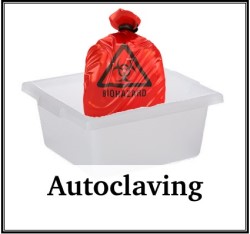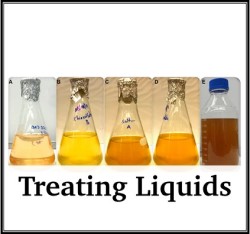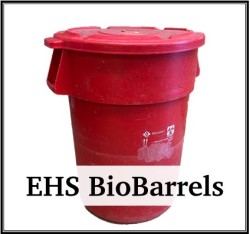Biological Waste Treatment
Biological waste treatment and disposal depends on the state of the materials (liquids or solids). First, what is classified as biological waste? Biological waste includes:
- animal waste (carcasses, body parts/fluids and bedding of animals intentionally exposed to potential pathogens)
- animal cell cultures
- human and non-human primate blood/body parts/cultures
- microbiological waste (cultures, stocks, specimens, transfer devices, etc.)
- pathological waste
- sharps as these terms are defined in 25 TAC §1.132
- any enriched sample/specimen
- samples/specimens that are reasonably considered to contain, have be purposefully exposed to or tested positive for a pathogen.
Biological waste should not be mixed with other non-biowaste items such as regular municipal trash items. Ensuring proper segregation of biowaste materials from regular trash not only decreases the work load for work area personnel (i.e., the waste generators) but also decreases overall cost to the university for waste disposal.
Accumulation & Treatment
No matter what materials are being treated, each treatment must be logged and the records maintained for three years. Treatment logs with all required information are listed in the Biological Waste Resources section at the end of this article. Select the icon for the type of waste you need to learn about.
Chemical Disinfection of Biological Waste
Chemical Disinfection Log - Liquids
Chemical Disinfection Log - Solids
Chemically Disinfecting Biowaste Poster - 11" x 17"
Autoclaving Biological Waste SOP
Environmental Health & Safety
-
Address
Texas Tech University, 407 Flint Ave, Lubbock, TX 79409 (Mail Stop 1090) -
Phone
806.742.3876 -
Email
safety@ttu.edu




